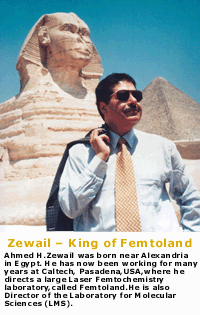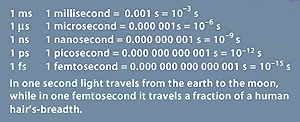The Nobel Prize in Chemistry 1999
 |
Ahmed Zewail receives the 1999 Nobel Prize in Chemistry for being the first to reveal the decisive moments of a chemical reaction – the moments when chemical bonds are broken and formed. |
|
|
Nobel Prizes and laureates
Six prizes were awarded for achievements that have conferred the greatest benefit to humankind. The 12 laureates' work and discoveries range from proteins' structures and machine learning to fighting for a world free of nuclear weapons.
See them all presented here.

